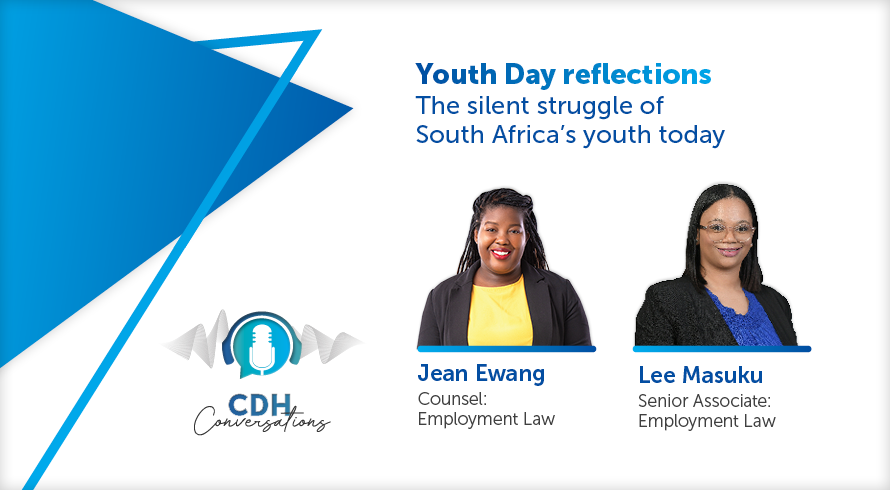Sureties and business rescue - you can run but you can’t hide
Section 154 of the Companies Act, No 71 of 2008 (Act) provides that a business rescue plan (BR plan) may provide that a creditor, who has acceded to the discharge of the whole or part of a debt owing to that creditor, will lose the right to enforce the debt or part of it. Furthermore, if a BR plan has been approved and implemented, a creditor is not entitled to enforce any debt owed by the company immediately before the beginning of the business rescue process, except to the extent provided for in the BR plan. Thus, the legislation contemplates a compromise of claims of creditors against a debtor in business rescue.
Chapter 6 of the Act dealing with business rescue does not address the position of a surety for a company in business rescue.
Legal position prior to the adoption of a BR plan
In Investec Bank v Andre Bruyns 2012 (5) SA 430 (WCC) it was held that the moratorium on legal proceedings in respect of a company in business rescue did not extend to the sureties of the company.
In African Banking Corporation of Botswana Ltd v Kariba Furniture Manufacturers (Pty) Ltd & Others 2013 (6) SA 471 (GNP), the court held that the liability of sureties for the company’s debts is not affected and they remain liable.
Legal position after the adoption of a business rescue plan
In Tuning Fork v Greeff 2014 (4) SA 521 (WCC), a creditor who had been paid out 28 cents in the rand by a company in full and final settlement of its indebtedness following a business rescue compromise, sought to recover the remainder of the company’s debt from the sureties. The court stated that if a BR plan provides for the discharge of the principal debt by way of a release of the principal debtor, and the claim against the surety is not preserved in the BR plan or in the deed of suretyship, the surety is discharged.
In Absa Bank Limited v Du Toit and Others 7311/13 the court decided that a provision in the BR plan for “full and final settlement of its indebtedness” results in the principal debt being extinguished.
In DH Brothers Industries (Pty) Ltd v Gribnitz NO & Others 2014 (1) SA 103 (KZP) the court held that if the BR plan provided for a discharge of the main debt (to which the creditor agreed or “acceded”), it had the effect as stipulated in the common law that the liability of a surety for that debt would also cease to exist.
In the case of New Port Finance Co (Pty) Ltd and Another v Nedbank Ltd 2016 (5) SA 503 (SCA) the court held that, provided the deed of suretyship contains a clause that affords the creditor a right to pursue the surety, even if the principal debt has been compromised, this will override a compromise in the BR plan.
The Hitachi case
In the recent case of Hitachi Construction Machinery Southern Africa Co (Pty) Ltd v Botes and Another (205/2018) [2019] ZANCHC 7 (15 March 2019), the applicant creditor, on the strength of a deed of suretyship, claimed the balance of the pre-business rescue debt from the respondent sureties, as well as the balance in respect of post-commencement financing together with interest.
The sureties opposed the application on two main grounds. Firstly, they contended that once the BR plan of the company in rescue (Blue Chip) was adopted, the applicant lost the right to claim any further amounts from the sureties. Secondly, they placed the quantification of the indebtedness in dispute.
The right of the applicant to claim from the sureties
It was not in dispute that the BR plan released Blue Chip from its debt to the applicant. However, the court had to consider whether this meant that the debt had been extinguished.
The court referred to the New Port case, where it stated that s154 of Act “deals only with the ability to sue the principal debtor and not with the existence of the debt itself”. The liability of a surety is unaffected by the business rescue, unless the BR plan itself makes specific provision for the situation of sureties. However, the BR plan of Blue Chip made no provision for the position of sureties.
The court held that, while the debt may not be enforceable against Blue Chip as the principal debtor, it did not detract from the liability of the sureties to pay. The sureties’ argument that, since no amount remained owing by Blue Chip in terms of the BR plan, the sureties were not liable in terms of the deed of suretyship, “[w]ould render the terms of the deed of suretyship nonsensical and militates against the very reason for a creditor obtaining security against the indebtedness of a debtor, ie to mitigate the risk of the debtor being unable to fulfil its obligations due to inter alia business rescue”.
The court concluded that the BR plan did not release the sureties from their indebtedness to the applicant.
The quantification of claims
The applicant contended that the acknowledgment and admission of the debts by the Business Rescue Practitioner (BRP) constituted an admission and acknowledgement of the indebtedness by Blue Chip as the principal debtor to the applicant, which was binding on the sureties. In this regard, reference was made to the deed of suretyship which provided that “all admissions and acknowledgments of indebtedness by the Debtor shall be binding upon us...”.
The sureties attacked the quantification of the claims on the basis that the BRPs merely perform a statutory function in terms of s145(5) of the Act, by including the applicant’s claim in the schedule of creditors, and did not act in any other capacity or on behalf of the principal debtor and therefore an admission by the BRPs of Blue Chip’s indebtedness was not an admission by Blue Chip.
The court stated that Chapter 6 of the Act abounds with functions of the BRPs in business rescue proceedings. Section 140(1)(a) of the Act provides that, during a company’s business rescue proceedings, the BRP has full management control of the company in substitution for its board and pre-existing management.
The court held that, the BRPs therefore step into the shoes of the company in business rescue. They are “[n]ot merely a postbox for the receipt of claims as seems to be suggested by the respondents”. In fact, the BR plan of Blue Chip stated that the BRPs assumed management control of the company in conjunction with the board of directors and pre-existing executive management. The claims were reviewed in detail. The sureties were both directors of Blue Chip as well as members of the executive management and it would be surprising if they did not participate and assist in the verification of the claims submitted by the creditors and which they now dispute.
It was concluded that the admission and acknowledgment of indebtedness by the BRPs constituted an admission and acknowledgment by the principal debtor which, in terms of the deed of suretyship, was binding on the sureties.
Conclusion
The Hitachi case reaffirms the legal principles already set out in previous case law on the liability of sureties in business rescue.
Creditors will, however, have no recourse against sureties for the recovery of the balance of the principal debt of a company in business rescue where a BR plan is adopted that provides for a compromise of claims and where the deed of suretyship is silent on the enforceability of the surety in the event of the company going into business rescue.
Accordingly, it is crucial from a creditor’s perspective that the deed of suretyship provides adequately for the rights of the creditor. This can be done by stating expressly that, should the company go into business rescue, this does not detract from the right of the creditor to recover from the surety the full amount for which it is bound under the suretyship. Another way for a creditor to adequately protect its rights is by obtaining a guarantee instead of a suretyship. A guarantee creates a principal obligation, not an ancillary obligation and, therefore, would not automatically be extinguished by a compromise of the principal debt. In addition, it is prudent that the creditor’s rights in respect of sureties are properly canvassed and specifically preserved in the BR plan.
The information and material published on this website is provided for general purposes only and does not constitute legal advice. We make every effort to ensure that the content is updated regularly and to offer the most current and accurate information. Please consult one of our lawyers on any specific legal problem or matter. We accept no responsibility for any loss or damage, whether direct or consequential, which may arise from reliance on the information contained in these pages. Please refer to our full terms and conditions. Copyright © 2025 Cliffe Dekker Hofmeyr. All rights reserved. For permission to reproduce an article or publication, please contact us cliffedekkerhofmeyr@cdhlegal.com.
Subscribe
We support our clients’ strategic and operational needs by offering innovative, integrated and high quality thought leadership. To stay up to date on the latest legal developments that may potentially impact your business, subscribe to our alerts, seminar and webinar invitations.
Subscribe



